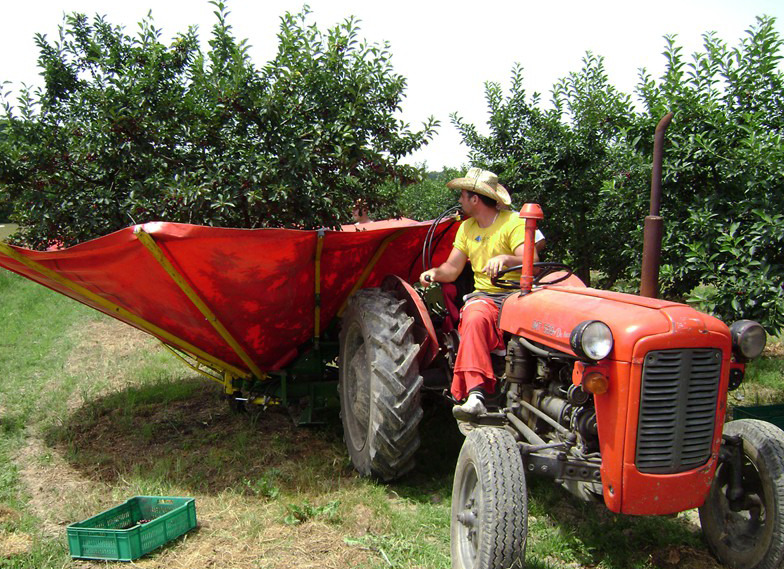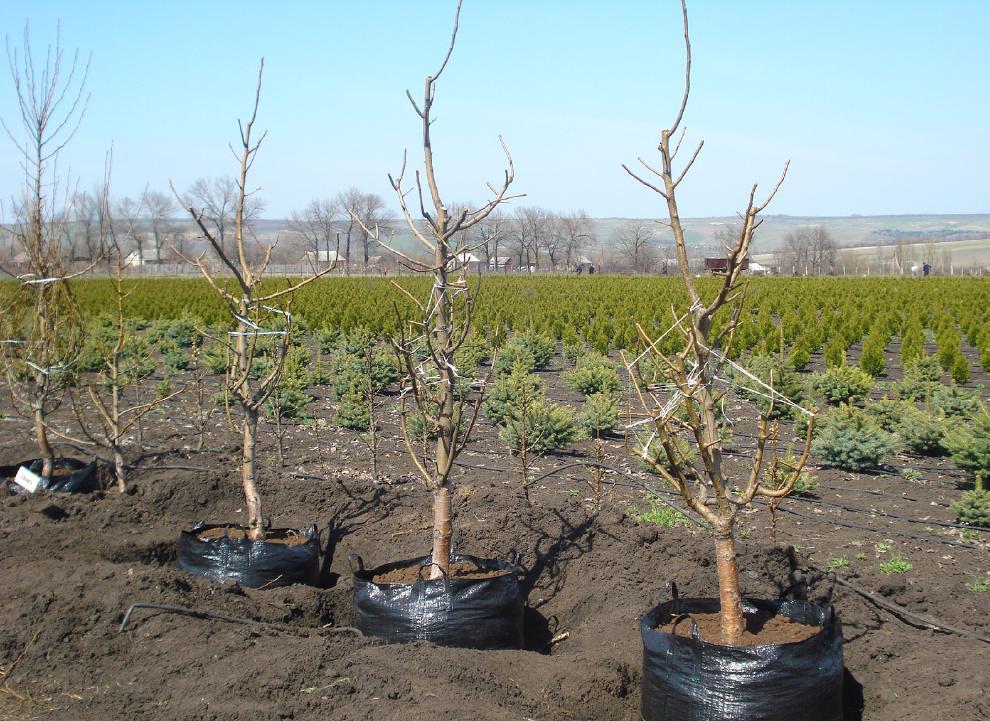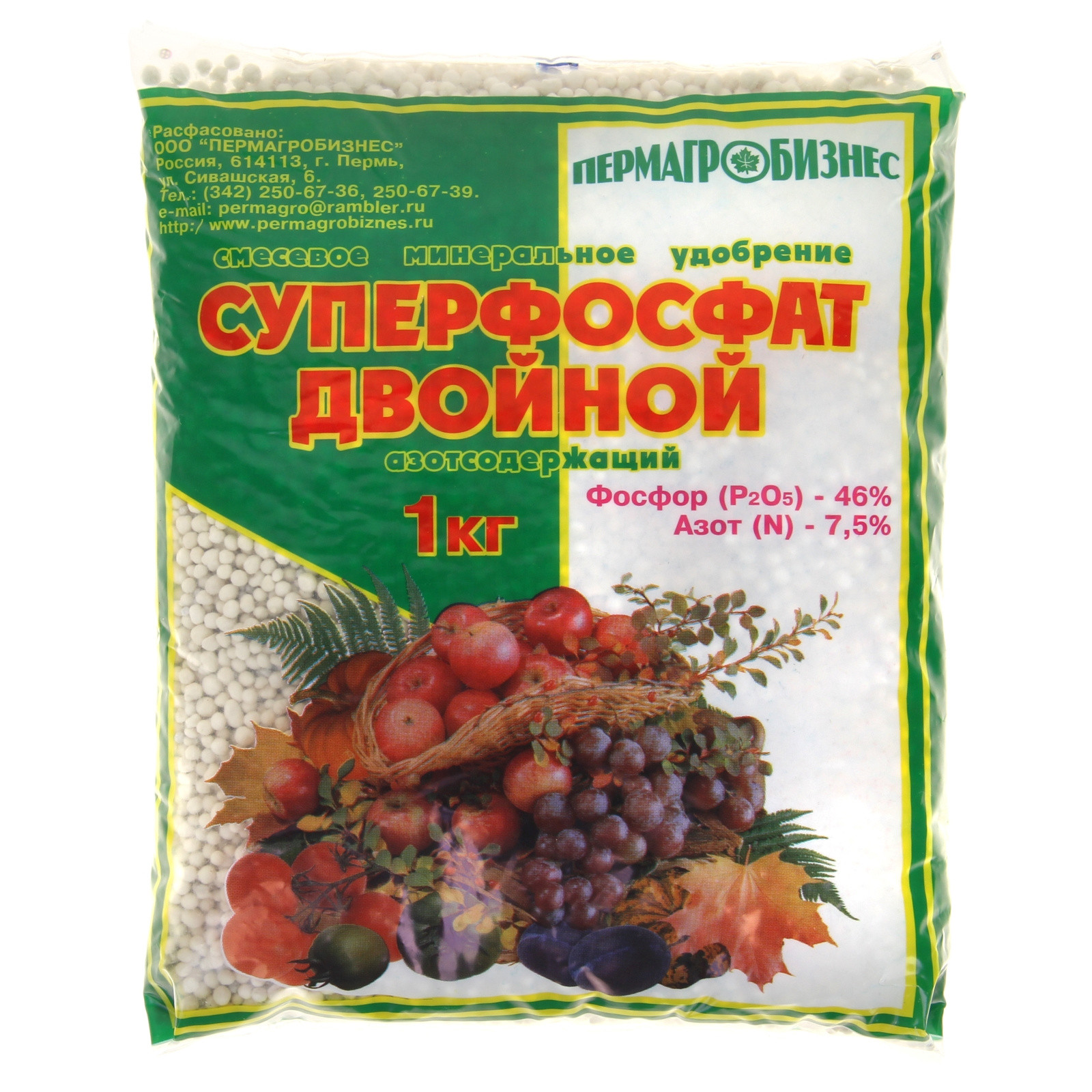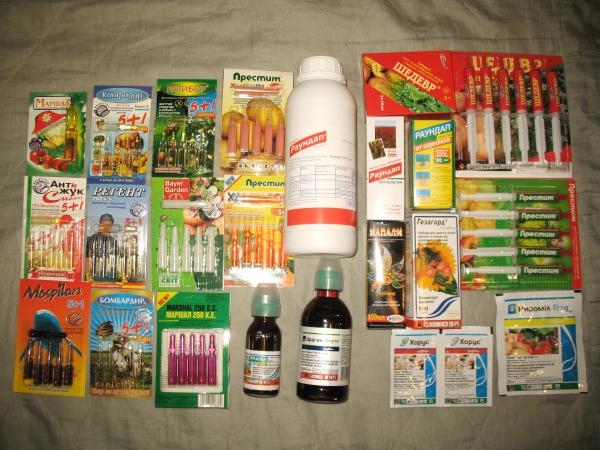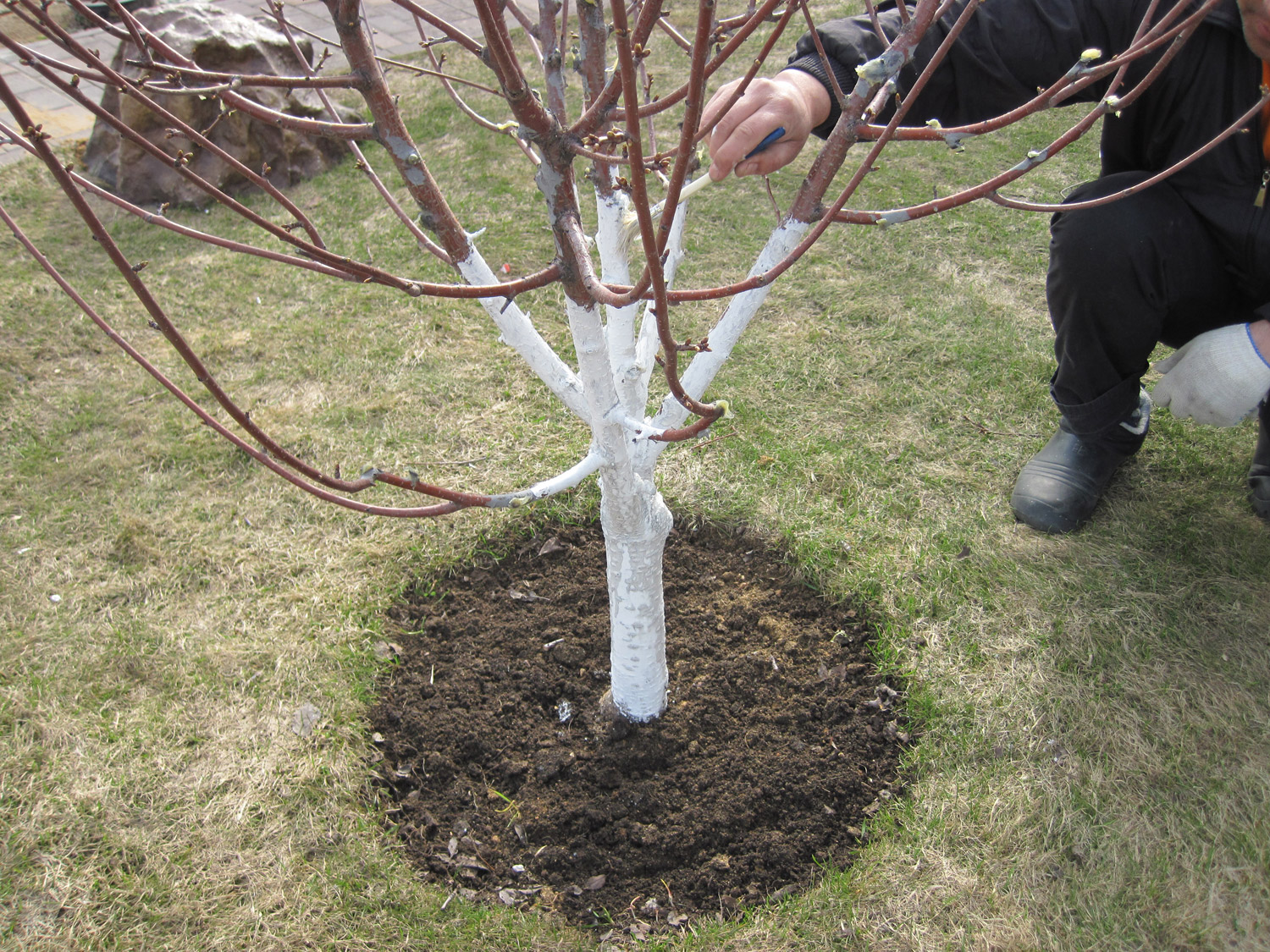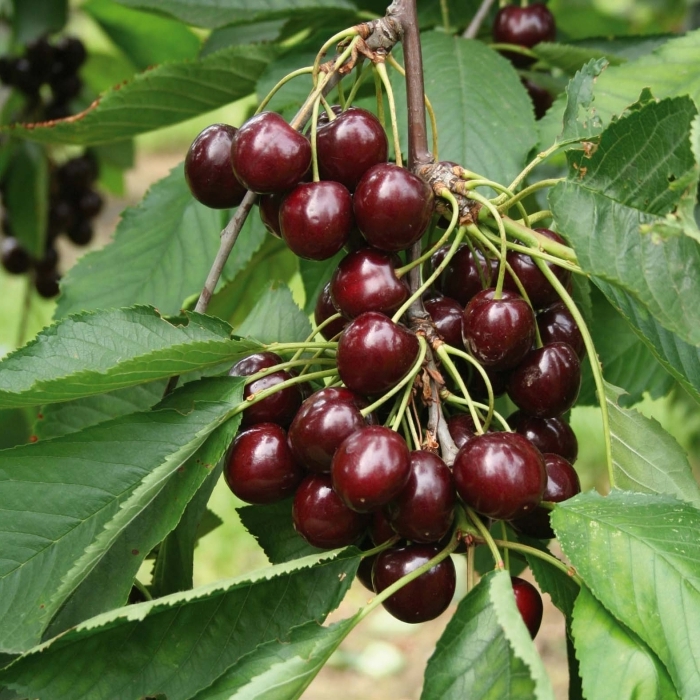Content:
The quality and quantity of the harvest largely depends on the correct choice of the variety, which must combine adaptability, high yield and versatility. All these requirements are fully met by the columnar variety of cherry Morozovka.
Brief description and history of the variety
Cherry is considered a valuable fruit plant in our country and around the world. The fruits of the culture are consumed fresh, and are also widely used for technological processing, used for freezing.
One of the relatively new, but already managed to gain wide popularity in Russia among summer residents and industrial workers is the Morozovka cherry variety. It was bred in the late 1980s on the basis of the I.V. Michurin by germinating a seed from the Vladimirskaya variety and treating it with chemical mutagens in the seedling phase. The creator of the variety is T.V. Morozova.
Cherry Morozovka: variety description
Trees of the Morozovka variety are characterized by growth of medium vigor, wide-round, slightly raised crown of medium thickening. Fruiting takes place mainly on bouquet branches.
The bark on the surface of the trunk and skeletal branches of trees of the variety has a light brown color. Shoots are large, gray-greenish in color, with an average number of lentils. The buds are ovoid relative to the branch, deviated at the middle level. The foliage is medium-sized, narrowly oval, characterized by a double-crested serration, a smoothed relief, a typical green color with gloss, no pubescence.
The leaf blade is located on a long petiole, medium-thick. The full-length petiole of the variety has a pronounced anthocyanin coloration. There are 1-2 small dark red glands located at the base of the leaf blade. The flowers are voluminous, bright white, horn-shaped. The petals are rounded. The flowering period is average. The stigma of the pistil is located above the stamens.
The fruits of the variety are relatively large (about 4.8-5.1 g), round in shape, with a rounded top, deepening near the base of the fruit, with a small, difficult to distinguish abdominal suture. The peduncle is long, it is not firmly fixed to the bone. Fruits are dark red in color, cover marks are absent. The bone is of medium size, piled, it detaches from the pulp well.
The taste of ripe berries is sweet, sweet, with subtle sourness. Of the chemical components in the fruits of the variety there are:
- sugars - 10.5%;
- acids - 1.37%;
- ascorbic acid (vitamin C) - 30 mg / 100g.
The fruits of the variety ripen in medium terms, fruiting begins in mid-July. The variety belongs to the category of early-growing - fruiting begins at 3-4 years of cultivation. The yield is constant, without periodicity over the years, 50-60 c / ha in the city of Michurinsk. Suitable for mechanized shaking harvesting.
The best pollinators for Morozovka are the varieties Griot Michurinsky, Lebedyanskaya, Zhukovskaya, Shokoladnitsa.
The varieties are characterized by increased resistance to negative temperatures and drought, have good immunity to coccomycosis (in epiphytotic years, they are affected by no more than 2 points). The variety reproduces successfully both by budding and by green cuttings. As a rootstock for growing the variety Morozovka, it is recommended to use seedlings of cultivated varieties, clonal rootstocks of the Vladimirskaya variety. The degree of rooting when propagated by green cuttings reaches 70%.
Agrotechnical features
When laying a garden using a large number of Morozovka saplings, it must be borne in mind that for the full growth and development of a tree and root system, they need planting according to a scheme of at least 3 × 3 m.
Site selection
According to the description, Morozovskaya cherry grows in areas that should be located on the sunny side. In this case, the plot should be exposed to winds as little as possible, and groundwater would lie at a sufficient depth from the soil surface.
Planting period
The procedure for planting seedlings in open ground is recommended to be carried out in the spring, however, if possible, it can be postponed to the beginning of autumn (first weeks of September). With a well-chosen time for planting trees, they practically do not suffer from frost and drought, due to which the rooting process is much more intensive.
It is recommended to purchase two-year-old seedlings, since the plants have fully developed foliage at this time. If it is impossible to use such planting material, it is allowed to replace it with one-year-olds.
Landing
On the site chosen for growing Morozovka, the following types of soils should prevail:
- loams with neutral acidity;
- sandy loam;
- sandy soils.
A landing hole is dug at the site up to half a meter deep and about 0.8 m wide. The soil extracted from the hole must be mixed with humus in equal proportions, after which superphosphate, wood ash and potassium chloride are added to the mixture.
A wooden stake 1-1.3 m long is firmly driven into the middle of the hole.
A small mound about 15 cm high is poured from the resulting soil substrate at the bottom of the hole.
The Morozovka sapling is installed on the surface of the formed soil eminence so that the root collar is several centimeters higher than the soil surface level.
The roots of the seedling are carefully smoothed and straightened, after which the seedling is covered with soil. The soil is compacted a little, after which a small circular depression is dug at a distance of 0.3 m from the seedling, which is immediately used for abundant irrigation of the plant.
When the moisture is absorbed well enough, the near-stem sector must be mulched.
The seedling is fixed to the peg with a piece of twine twine tied with a figure eight.
Planting care
Tree care should be comprehensive and regular.
Irrigation
Immediately after planting the seedlings in the ground, it is necessary to spill them with warm, settled water in a volume of at least 30 liters. Subsequently, Morozovka needs minimal irrigation only when necessary.
After the end of the flowering phase, the frequency of watering should be increased if the season was not rainy: at least once a week, one bucket of water in the morning and evening. Moisture should penetrate as deeply as possible into the soil, and not stagnate on the surface of the soil.
It is necessary to free the trunk circle from weeds, which draw on themselves a significant part of the nutrients from the soil. After that, the soil is dug around to a depth of about 12-15 cm. The dug part should approximately coincide with the diameter of the plant crown.
Irrigation is completely stopped 2-3 weeks before the start of fruiting. This is done to prevent the fruit from cracking.
Fertilizer use
A full frost harvest cannot be obtained without the introduction of appropriate nutrients.
Nitrogen and complex fertilizers must be applied in the spring before the first loosening of the soil either in a dry or liquid state. Phosphorus-potassium fertilizers should be applied in the fall for digging the soil.
The introduction of organic matter and mineral elements is allowed to alternate over the years - one type of fertilizer should be applied in one year, and the second in another year. This rule does not apply to nitrogen fertilizers, trees need them annually. The fertilizer application rate varies depending on the level of soil fertility, the age and general condition of the trees, as well as the type of fertilizer and the amount of active ingredient in it.
It is recommended to apply organic matter and nitrogen fertilizers in a liquid state (infusion of mullein or bird droppings) into circular grooves 15-20 cm deep, dug around the plants every half a meter or into special holes dug along the periphery of the crown. Foliar top dressing on a leaf using urea (40-50 grams of the drug per 10 liters of water) in June-July is effective.
The first 7 years of life Morozovka needs annual feeding. After that, you need to go to a certain frequency. So, organic matter is applied every 4 years, and mineral fertilizers - only in the second year after planting in the ground.
Diseases and pests
Freezer has a certain degree of resistance to the most harmful cherry disease - coccomycosis. Nevertheless, in some cases, plants are still affected by the disease. For treatment, the appropriate fungicides are used, the treatment is carried out three times per season - before the beginning of bud break, at the end of flowering and 15-20 days after the completion of budding.
To prevent damage to the variety by anthracnose, plants should be treated with 0.2% zinc solution or manganese sulfate before or after flowering. If the tree has symptoms of the disease, it is necessary to cut off and remove all affected fruits from the garden, and then treat the plants with fungicides.
Treatment with fungicides before and after flowering is also carried out to protect plants from clasterosporiosis (perforated spot).
An equally dangerous cherry disease is moniliosis. For prevention, the tree and the soil around it in the spring are treated with a 3% solution of Bordeaux liquid. Before budding begins, spraying with a 3% solution of ferrous sulfate is effective. Before flowering, it is also recommended to treat the plantings with an appropriate fungicide.
Among insects, aphids can inflict the greatest harm on Frost. To counter it, you need to install special trapping belts. Treating trees with an aqueous garlic infusion will allow you to drive away ants from the plant, which drag the aphid larvae to the cherry.
The cherry fly is another potential pest of Frostbite. In order not to attract it, you need to remove all crumbling fruits from under the plants. In the fall, you should carefully dig up the soil in the near-trunk sector. Such soil will properly freeze and the flies wintering in it will die.
Pruning
Cherry freezing needs timely pruning and crown formation. The procedure is carried out either in the first weeks of spring or in the fall. In the absence of proper care, the number of bare shoots on the tree will increase, which will negatively affect the yield.
Pruning is carried out according to the following scheme:
- All bare shoots in the crown are shortened.
- Only 5-6 of the strongest and most fully formed shoots should be left on the plant. They should be located in different tiers: 1 branch in the third tier, 2 in the second and 3 in the first.
Harvest
In most farms, the frost is harvested in the traditional manual way. However, the variety has potential for mechanized harvesting. This is due to the ease of separating the fruit from the stalks.
Preparing for winter
Despite the winter and frost resistance of Frost, the variety will not be damaged by additional protection from cold weather. At the end of the leaf fall, the foliage and mummified fruit residues should be collected from the soil. From the surface of the trunk and skeletal branches, the dead bark is cleaned off, after which the whitewash is carried out.
For protection from rodents, it is recommended to wrap the tree with a special covering material or burlap. The procedure will also help protect the tree from sunburn during the winter.
Advantages and disadvantages
The advantages of Morozovka include an increased level of winter hardiness of wood, high resistance to coccomycosis, average vigor, taste of the harvest, and a convenient ripening period.
Negative varietal characteristics are insufficient resistance of flower buds to an unfavorable climate when cultivated in the northern parts of the Chernozem region.
Cherry Morozovskaya is a variety suitable for gardens of various types with high taste and marketability of fruits. In suitable climatic conditions and at the appropriate agrotechnical level, the variety is capable of producing abundant and high-quality harvest.

